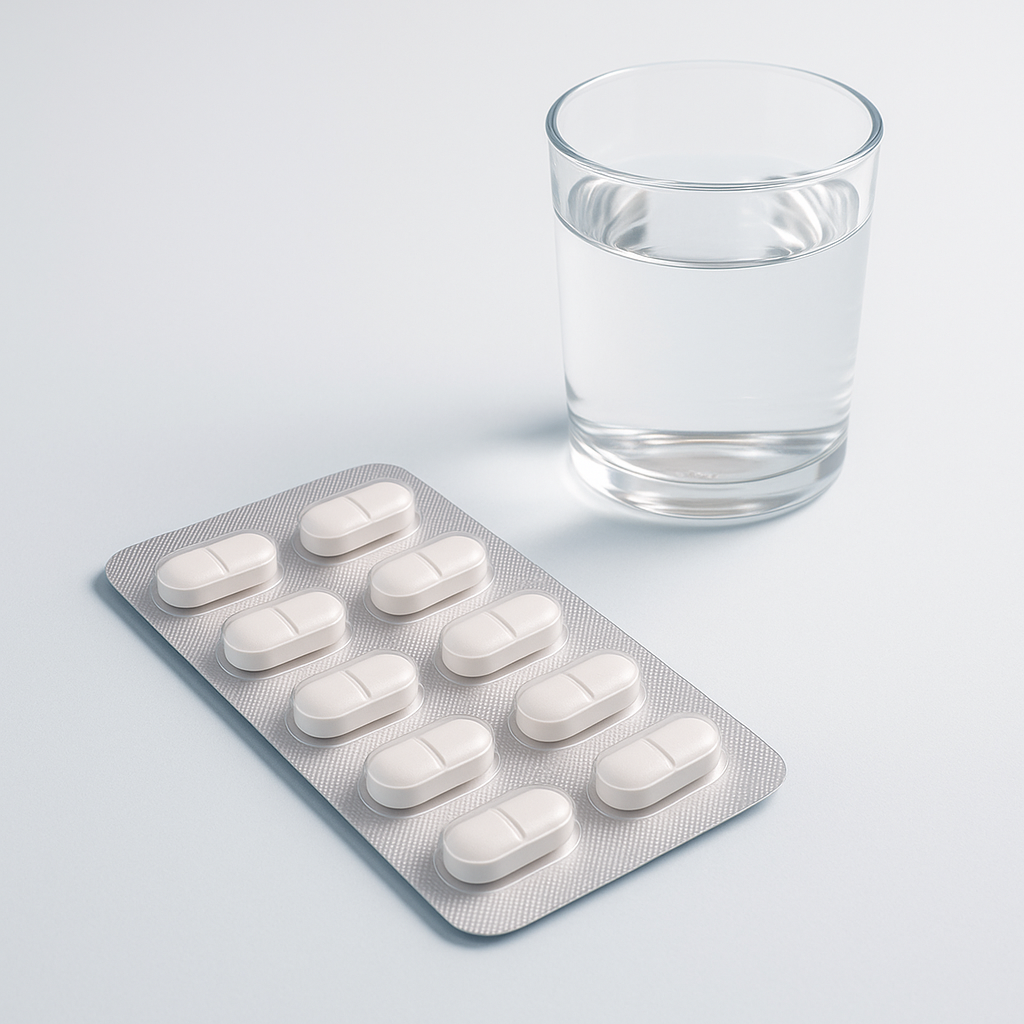Did you know Panadol to be best selling pain reliever in the world, with millions consuming Panadol Everyday? This is the reason why it is important to understand what Panadol is and the way it works. In this guide, you will find out what types of it exist, how it can be used, and what side effects it may have. Whether it is the case of headaches, fever, or pain this guide will assist. You will obtain the information that will help you learn how to use Panadol wisely. The knowledge of different forms and advantages of Panadol is the requirement to safe pain treatment. Panadol has lots of options, so we will go through all of them and how they can serve you.
What is Panadol?
Panadol is a popular nonprescription drug. The real agent is the one known as Paracetamol or acetaminophen, and it assists in pain and fever. Therefore, Panadol contains Paracetamol as a primary active ingredient, which reasons why this medication is considered safe and effective by many patients.

Composition
Panadol composition is aimed at Paracetamol. It is known to alleviate fever and take away pain. Panadol may contain other ingredients depending on the kind.
Panadol comes in manageable in many things. It supports with:
• Muscles ache
• Fever Management
• Headache
• Cold symptoms
It is wonderful during minor as well as major health problems. Panadol is trustable when it comes to headaches or colds.
Panadol Variants
Being familiar with the Panadol variants assists you to select the appropriate product that can be used in pain relief or fever. Each of them is oriented to particular requirements. This will provide you with the optimum pain relief depending on your case.
| Panadol Variant | Use Case | Recommended dosage |
| Panadol Regular | Overall pain relief | 500 -1000 mg |
| Panadol Extra | Greater analgesia | 500 -1000 mg |
| Panadol Childrens | Fever and pain relief, children | Weight and age dependent dosage |
Types of Variant
Panadol comes in varieties of forms among adults and children. Some of the primary types are here:
•Regular Tablets: They assist in alleviating pain to the adult.
•Children Formulation: There are chewable and liquid forms of product in kids doses.
•Flu Relief: Cures cold and flu symptoms as well as pain.
•Extended Release Tablets: Long term action, used in chronic pains.
Choosing the Best Variant for You
Consider your health and symptoms when using Panadol. Consider:
•Your health conditions and age.
•The extent of the pain or fever.
•The advantage of each variant.
By doing so you select the most suitable Panadol and get as much comfort as it is possible.
| Variant | Form | Target Audience | Key Features |
| Ordinary Tablets | Tablet | Adults’ | Fast relief of pain |
| Formulation in Children | Liquid/Chewable | Children | Safe dosage in kid |
| Flu Relief | Tablet | Adults’ | Treatment of flu symptoms |
| Extended Release Tablets | Tablet | Adults’ | Long acting |
The Way to Take Panadol
It is important to know how to take Panadol in order to manage pain well. Following to the correct dosage is even safe and more effective in the working of the medicine. The application of Panadol at the appropriate time will also go a long way in alleviating pain.

Dose Instructions
The form of medication should have dosing instructions on the package at all times. It is customized by your age and your health.
In adults, the common dose is
The typical dosage of Panadol in adults is 500 mg to 1000 mg in every 4 to 6 hours. Do not exceed 4000 mg a day. This helps in pain control that has no side effects.
- Take 1-2 tablets 4 to 6 hours as needed
- Not more than 8 tablets per day
The doses of children are age and weight dependent. Never guess or take the proper dosage out of the packaging or without permission of doctor. Panadol has importance in taking the medicine correctly.
| Child Weight (lbs) | Dosage (mg) | Frequency (hours) |
| 22 –27 | 160 | 4 to 6 |
| 28 –32 | 240 | 4 to 6 |
| 33 –43 | 320 | 4 to 6 |
| 44 –54 | 400 | 4 to 6 |
| 55 and above | 500 | 4 to 6 |
Side Effects of Panadol
The most important thing when using any kind of medicine, such as Panadol is your safety. It is normally safe, and it is good to know the potential side effects.
Common Side Effects
Several side effects are common among the people using Panadol. These include:
- Dizziness
- Nausea
- Stomach upset
- Allergy
The symptoms see the majority of those that are not severe, and they disappear fast. They occur when your body becomes adapted to the drug. Being aware of these side effects tells you what to identify in the event of their occurrence.
Severe Adverse Effects
Panadol may have severe side effects, which cannot be dealt with without prompt medical assistance. These include:
• Damages to the liver severely
• Unusual bleeding or bruising
• Jaundice (yellowness of the skin or eyes)
In case there are such serious side effects, see a physician immediately. It is worth watching your health and being aware of the risks when using Panadol.
Panadol Interactions
Knowledge of Panadol interactions is important in order to apply it safely and effectively. Some food and other drugs would alter the effectiveness of Panadol on your body. Being aware of these interactions may prevent the side effects and improve your treatment.
Relationship with other Drugs
Panadol may combine with other drugs which will either impair their performance or create complications. Medication containing alcohol or blood thinners may be hazardous. When you are taking other medicines always discuss with your doctor the potential interactions.
Foods and Beverages which can interact
Panadol can also be influenced by what you consume. Taking alcohol together with Panadol can destroy your liver. Caffeine could only enhance the effect of pain relief but it may impose inconvenience on the subject matter. To keep safe when taking Panadol, it is important to know such food interactions.
Uses of Panadol
Panadol should not miss in your medicine cabinet. It is excellent when it comes to the treatment of headaches and fever. It is ideal both in common as well as in migraine headaches providing relief within a short period.
Migraine and Headaches Relief

Panadol is used by many people to take care of the headaches and migraines. Its main component, paracetamol, combats the pain and returns the comfort. It cures tension headaches and bad migraines.
Fever and General Analgesia
Panadol also works very well in treating fever. A fever that is very high when you are sick may make you feel worse. It reduces body temperature, and makes you feel better. In addition, it relieves aches generally body pain, such as muscle aches as well as joint pain.
Other Conditions
Panadol assists in a number of particular conditions. It is not only against headaches and fever. It also treats osteoarthritis, muscular and skeletal conditions and cold or flu. It reliefs the management of pain and thus you feel more comfortable.
Comparisons with Other Pain Relievers
In the comparison of pain relievers, do not forget that Panadol is in correlation with ibuprofen and aspirin. It is a brief showing as follows:
| Pain Reliever | Effective for | Common side Effect | Long term Use |
| Panadol | Headache, Fever | Minimal | Yes |
| Ibuprofen | Inflammatory Pain | Gastrointestinal Problems | No |
| Aspirin | Blood Thinner , Pain | Stomach bleeding | No |
This comparison reveals that Panadol is a decent medication to use among people who want to find the effective relief of pain without severe adverse effects.
Effects of Overuse
Panadol in excess may lead to serious problems. Overdose is bad as it affects your liver and stomach. It may also cause your body to require more of it. One of the main answers to preventing health problems is to know about such risks. Take the dosage carefully so as to remain safe.
Seek the advice of a Healthcare Professional
The major lesson would be when to seek help concerning Panadol. The professionals of the healthcare industry can share their knowledge, which can be useful to your needs. It is extremely important when you have some chronic pain or some other problems with your health.
When to Get Medical Advice
See a doctor when you take Panadol very frequently or when your pain does not reduce. You ought to seek advice when you experience some abnormal side effects or when other drugs influence the performance of Panadol.
• Unadulterated pain at repeated doses
• Undefined pain
• Experiences of side effects
• Other drugs that can interfere with the effectiveness of Panadol
Conclusion
Knowing about the benefits of Panadol assists you in making better decisions when treating pain. It has discussed its types, the dosage and any side effects. Now you are informed a lot about this common medicine. It reliefs headaches, fevers etc. The main point is to use Panadol wisely. To be safe and effective, do not forget to consult with a doctor before using it.
Knowing about the safe use of Panadol will enable you to take control of your pain. You can learn how to make a wise decision in according with this guide and make a difference in your health and well being.
FAQ’s
Q1. Which are the variants of Panadol?
A. Panadol is available in different forms. These are common tablets, liquid and such special forms as Panadol Extra and Panadol children.
Q2. What is the best way of taking Panadol?
A. Do not take a different amount to that suggested by the label. The adults are to utilize 500 mg to 1,000 mg every 4 to 6 hours. Do not exceed more than 3000 mg per day.
Q3. What are some side effects to taking Panadol?
A. Yes, it may have side effects in terms of nausea and dizziness. Some serious consequences such as liver damages may also occur when you overdose. Look out for the following symptoms.
Q4. Does Panadol mix with others?
A. It is true that Panadol may interfere with other medication, such as alcohol or anticoagulants. Never fail to discuss potential interactions with your doctor.
Q5. In what conditions does Panadol serve?
A. Panadol is useful in case of headache, after exercise pains and aches, arthritis pains, colds and fevers. It has a lot of people with ordinary issues.
Q6. Why should people use Panadol instead of other pain relievers?
A. Panadol works and fewer side effects are associated with it compared to the NSAIDS such as ibuprofen. It is also lighter on the stomach making it safer alternative to many.

 Medically reviewed by
Medically reviewed by